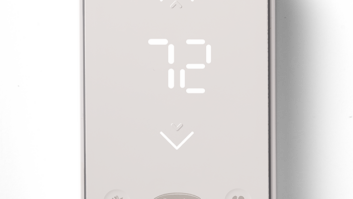Espoo, Finland – Nokia swung into
the red in its fiscal second quarter and first half.
The results were in large part
due to a 20 percent second-quarter decline in sales of handsets and related
services to 5.5 billion euros ($7.8 billion.)
The company posted an operating loss of 487
million euros ($697.3 million) compared with a year-ago operating profit of 295
million ($422.3 million). The net loss came to 492 million euros ($704.3
million) compared with a year-ago net profit of 104 million euros ($148.9
million.)
The second-quarter losses offset
first-quart net and operating profits to generate a first-half operating loss
of 48 million euros and a first-half net loss of 261 million euros. Net sales,
nonetheless, were up almost 1 percent to 19,674 million euros, including the company’s
wireless- infrastructure and Navteq map software businesses.
The company’s handset business
posted a second-quarter operating loss of 247 million euros compared with a
year-ago operating profit of 643 million euros.
The company blamed the abrupt drop
in handset sales in part to carriers and distributors that cut back purchases to
reduce first-quarter inventories, which Nokia said ended the second quarter at
the midpoint of the company’s normal four- to six-week range.
Nokia also blamed sequential and
year-over-year declines in smartphone sales to “the strong momentum of
competing smartphone platforms relative to our Symbian devices, particularly in
Europe and China, as well as pricing tactics by certain competitors,” a statement
said. Sequential and year-on-year declines in other mobile phone sales were the
result in part to a lack of dual-SIM phones until late in the second quarter.
Dual-SIM phones are posting growth in markets outside the U.S.
The company didn’t blame component
shortages for its sales declines, as Sony Ericsson did in its most recent
quarter, saying its Japanese suppliers recovered faster than expected from the
Japan earthquake and it shifted component purchases to facilities unaffected by
the earthquake.
Nokia’s handset sales accounted
for 59 percent of total sales of the quarter’s 9,275 million euros, which were
down 7 percent for the quarter but up almost 1 percent for the half because of
a first-quarter 9 percent gain.
The company is in the middle of a
structuring and a repositioning to focus its smartphone efforts on the Windows
OS, and the challenges in executing this “strategic transformation” have
“manifested in a greater than expected way” in the second quarter, Nokia CEO
Stephen Elop said in a prepared statement. “However, even within the quarter, I
believe our actions to mitigate the impact of these challenges have started to
have a positive impact on the underlying health of our business.”
He also said the company is
continuing its smartphone transition to focus on Windows-based smartphones and
that “beginning this year, we plan to have a sequence of concentrated product
launches in specific countries, systematically increasing the number of
countries and launch partners.”
In other matters, Elop said the
company plans expense reductions deeper than the previously announced target of
1 billion eruos in its handset business for 2013. The company didn’t mention a
specific amount.
North America, the company’s
lowest volume region, posted a sales decline of 5 percent, to 467 million
euros.
Currency conversions were
calculated at a rate of 1 euro equaling $1.43.













